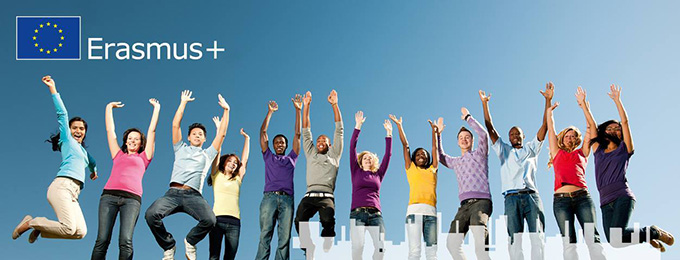The new Erasmus+ programme guide for 2022 contains new possibilities for mobility and cooperation, and leaves us with an open question.
On 24 November 2021, the European Commission (EC) published the new programme guide for Erasmus+ for 2022 and its calls for proposals. It is based on the 2022 annual work programme for Erasmus+ adopted by the EC on 8 November 2021.
Boasting with the biggest budget to date (EUR 3.9 billion for 2022), the new calls for proposals and the programme guide for Erasmus+ present the usual programme actions for mobility, cooperation and policy support project funding. In 2022, the Erasmus+ programme will have come from focusing mainly on exchanges in higher education 35 years ago to supporting physical, virtual, blended exchanges in all sectors of education as well as funding long-term collaboration projects between educational institutions in all fields across Europe in 2022, the European Year of Youth.
The programme includes more possibilities for exchange and collaboration and some changes to existing programme lines this year. Under Key Action 1 (Mobility projects), DiscoverEU gives young people (18 year olds) free travel passes for the European continent. Piloted since 2018 and cancelled due to the pandemic in 2020, the European Education and Culture Executive Agency (EACEA) will offer two rounds of calls in 2022. This time, specific rounds will be available only for young people with fewer opportunities to make this type of exchange more inclusive. DiscoverEU is not available for Swiss organisations. Furthermore, blended intensive programmes that were also offered in 2021 will continue and support mixed online and physical learning. Lastly, the exchange with third countries outside of Europe will be increased, financed by the external instruments of the EU.
More changes concern cooperation projects under Key Action 2 of the programme. In order to further reduce the administrativ burden and to increase flexibility within the projects, cooperation partnerships can now be financed with lump sums per project instead of unit costs. Furthermore, so-called Forward-looking projects will address the twin transition (green and digital) in the education sector on a large scale. The goal is to achieve a Europe-wide impact by involving private partners too to foster innovation. Under the title Partnerships for Excellence, the Erasmus+ Teacher Academies are funded for a second time: This programme line supports institutions of teacher training working together to establish networks of practise, to develop common learning modules and to work towards a cross-campus collaboration. Similarly, the Centres of Vocational Excellence (CoVE) are being continued and funded with a view of establishing Europe-wide alliances of VET providers and businesses. It is noteworthy that in this particular format, organisations based in countries not associated to the programme can also participate, as full partners, affiliated entities or associated partners when they represent “an essential added value to the project”. In Switzerland, institutions of teacher trainings have also been identified as an important target group and the Swiss agency for exchange and mobility Movetia funds them with their NALE programme. Further, the Swiss VET sector can build on the experience of the first Swiss-CoVE “innoVET” project for further cooperation projects between VET actors on a European level.
Finally, 2022 will mark the full roll-out of the European Universities initiative (EUI) after two pilot calls in the last years. As described in the annual Erasmus+ work programme for 2022, existing as well as new alliances will be eligible for funding. The work programme further stipulates that higher education institutions (HEIs) from countries in the European Higher Education Area (EHEA), which includes Switzerland, can participate as associated partners. Despite the fact that the EUIs are part of the programme line Partnerships for Excellence under Key Action 2 of the Erasmus+ programme, the programme guide does not contain any further information. The EC announced that they would publish a further separate call subsequently. The detailed conditions and the set-up for Swiss EUI participation will be clear only at that point.

